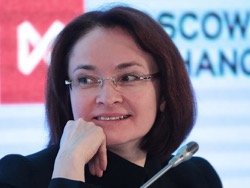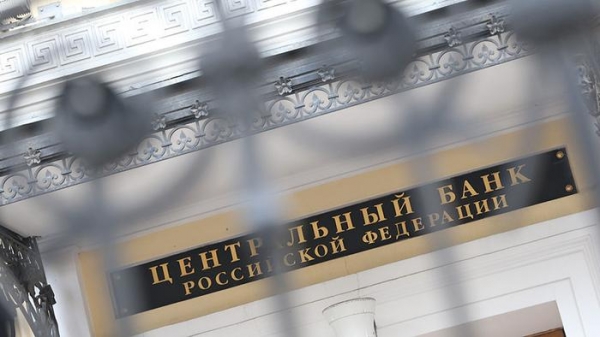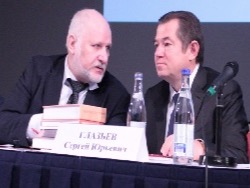
The Central Bank saw in the Russian economy signs of recovery growth, but still fears of rising inflation. Prices will go up in the second half of the year. Summary of concerns — the key rate remained at the same level.
The Bank of Russia on Friday decided to keep the key rate at 11% per annum.
Key motives to leave everything as is, two. First, the slowdown of inflation. She “declined markedly”. The annual rate of consumer price growth fell to 7.3% as of April 25.
However, the Central Bank fears that the slowdown in inflation is temporary. Soon will come into force the factors that will drive inflation: indexation of wages, pensions, regulated prices and tariffs, as well as the decline in world food prices.
In the middle of 2016 may be a temporary acceleration of the annual growth in consumer prices due to low base effect of last year. But in the future, inflation will continue to decline, noted in the TSB.
“According to Central Bank estimates, annual inflation will be about 5% in April 2017 and will reach the target level of 4% at the end of 2017”, — the regulator has confirmed its previous forecast.
However, the Central Bank acknowledged that there are risks associated not only with inflation but also with the slow decline in inflation expectations of businesses and households. These risks are fuelled by “the uncertainty of the parameters of the state budget and declining revenues.
The second factor that determined the decision of the Central Bank to keep the rate that determines the cost of borrowing for commercial banks, — the coming economic growth in Russia.
“Changes in the economy, approximating its entry into the phase of restorative growth. It is expected to move the pace of quarterly GDP growth into positive territory in the second half of 2016 – early 2017,” reads the official press release of the regulator.
The regulator has described the factors that promote recovery: developing import substitution, expanding non-oil exports, increasing capacity utilization. And in General, the Russian economy demonstrates resilience to fluctuations in oil prices.
Forgot to mention the Central Bank and a modest contribution to the recovery of GDP: floating exchange rate, the shock-injected in December 2014, partly offset the adverse impact of external shocks”.
The Bank of Russia once again promises to resume a “gradual reduction of the key rate” on one of the next meetings of the Board of Directors.
But even with the unchanged key rate, banks will lower interest rates on loans: “This is mainly due to the planned drawdown of the Reserve Fund to Finance the budget deficit and, as a consequence, the expected transition of the banking sector excess liquidity”.
Most experts and market participants were betting that the Central Bank will not touch bet. In order to achieve the desired target (benchmark) inflation of 4%. Target 4% planned first to achieve by 2017, now, judging by the statements of the head of the Central Bank Elvira Nabiullina declared the target shifted to the end of 2017.
There is no doubt that the Central Bank will be able in the course of the year three times to bring down rising prices. Such doubt is not only the expert community, but also in the Cabinet. On 8 April, the government approved the forecast of socio-economic development, in which inflation (baseline scenario with oil at $40) may be in 2017, and 4.9% in 2018 4.5% only in 2019 — 4%. Last year inflation accelerated to a record 12.9%.
The government is urged not “to make a fetish of” target the inflation target to 4%. “There can be no simple solutions. As the state emission distribution of the money, and simple solutions in the form of the introduction of such digital fetishes at 4% inflation”, — said the Minister of economy Alexei Ulyukayev.
Moreover, the target of 4% is not the result of in-depth macroeconomic calculations. The Central Bank has previously explained that to set a goal of 2%, as do developed Western countries, it would be too ambitious, and inflation of 6% is not enough low. Therefore, it was selected the average benchmark of 4%.
Despite the fact that revolutionary decisions from the Central Bank this time is not waited, the intrigue remained. Market participants a night to remember on 16 December 2014. Then, the Central Bank raised its key interest rate to 17%. By 6.5%, despite the fact that traditionally, the Central Bank up to this point were famous for their conservatism. After half month, the Central Bank began to gradually reduce the key rate. First by 2 percentage points to 15% per annum, then in March — by 1 percentage points to 14% per annum, in early may — by 1.5 percentage points and in June — by 1 percentage points to 11.5% per annum. On the last day of July, the Central Bank lowered the rate by another 0.5 percentage points
In August 2015, the Central Bank decided to keep key rate at 11% per annum, given the increase in inflationary risks while maintaining the risk of a significant cooling of the economy”. Since then, the rate has not changed.
The next meeting of the Board of Directors of the Bank of Russia, which will address the issue of the level of the key rate, scheduled for June 10, 2016.
Raiffeisenbank before the announcement of the decision, the Central Bank said that the reduction of the key rate will not, “however, the rhetoric will soften”. “Since the last meeting CB (18 March) the price of Brent crude oil rose from $42 to $48 per barrel, the ruble has appreciated from 68 to 64 RUB/USD. and inflation fell from 7.9 to 7.3% g./g. Also slightly decreased and inflation expectations. However, according to the results of the last meeting the head of the Central Bank made clear that, given the high volatility in the foreign exchange market, one should not expect quick reaction of the Central Bank on the positive momentum of the ruble”, — stated in the report of Raiffeisenbank. The forecast was justified.
The experts of the Bank believe that lasting for 2.5 months strengthening of the ruble, of course, creates the preconditions for more active action on the part of the Bank of Russia. A similar opinion is held at the Bank ING.
The Central Bank may begin a cycle of rate cuts since June, according to ING. In June may be a reduction in rate by 50 basis points, and then another 150 points. In the end, the key rate can reach 9% in 2016 and decline further at least to 7.5% in 2017″, — says Dmitry Polevoy from ING.
According to Yevgeniya Abramovich, head of analysis foreign exchange risks the Dukascopy Bank SA, the Central Bank took a wait and see attitude amid uncertainty around future price movements in the oil market and the prospects for rate hikes in the US.
The market reaction to the results of the meeting of the Central Bank mostly moderately positive, as it coincided with the expectations of the participants.
But the explanation of the Central Bank at this time was a bit confusing and contradictory, says Georgy Vashchenko, head of operations on the Russian stock market IR “freedom Finance”: “the Main message for the market — readiness of the regulator to reduce the key rate in the near future, if inflation risks will not increase. This can be interpreted as a promise to reduce the rate at a stable exchange rate”.








